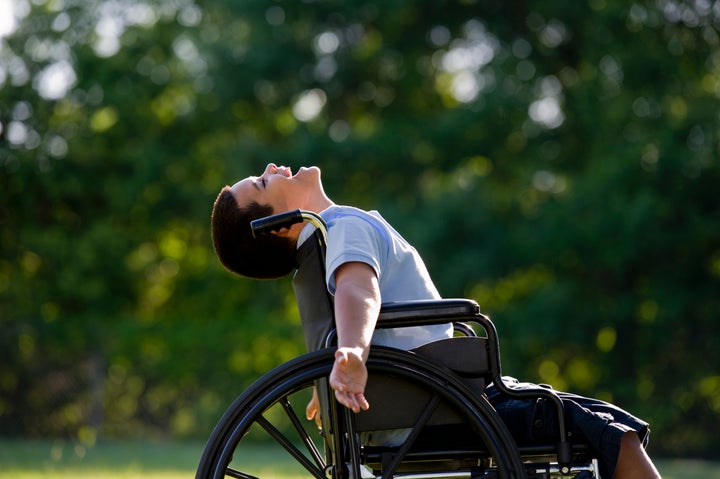
Most kids around Bella’s age love Halloween.
She’s 10 years old, which is arguably a peak age (depending on who you ask) for the avid trick-or-treater. Her peers are still totally enchanted by the night’s spooky traditions, and are pleased to dress up and head out at night to collect their mountains of sugary rewards. Even Bella’s younger brother, Petie, can’t resist the night’s allure.
Bella, though, is less enthused by the holiday.
“The whole celebration just brings up a lot of physical and emotional anxieties,” her mother, Andrea Haefele of Markham, Ont. told HuffPost Canada.
Watch: Why Halloween can be difficult for kids with Autism Spectrum Disorder. Story continues below.
Bella was born with multiple disabilities, including severe autism, global development delay, and Pitt-Hopkins Syndrome, a neurological disorder that causes seizures and vision problems, among other things. Crowds are tough for her to navigate. Her sensory sensitivities make her prone to meltdowns. She uses a wheelchair, so climbing stairs to ring doorbells isn’t a possibility.
“The crowds, inaccessibility, problems with stairs, the difficulty explaining accommodations — could other people understand why she might need to skip the line?” Haefele, who runs a disability advocacy blog called Mom Behind the Label, said. “It just isn’t worth the hassle.”
How to make Halloween accessible
According to a Canadian survey on disability from 2012, nearly 14 per cent of the Canadian population experiences some form of disability, with about half of that group — about 1.9 million people — facing mobility challenges. An estimated 1.5 per cent of all kids in Canada have a disability classified as “severe” or “very severe,” and most school-aged children with disabilities, like Bella, have more than one of them.
Still, what often fails to make its way into conversations about Halloween is how — in spite of all its ghoulish fun — it can be extremely prohibitive for kids who have disabilities.
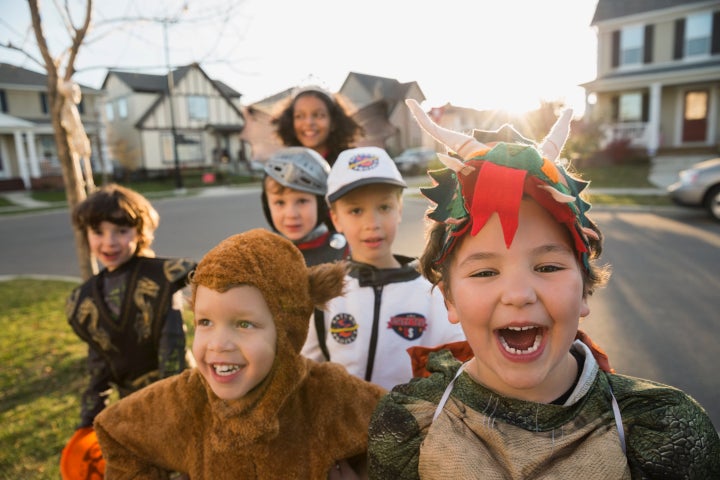
“Halloween is certainly a fun holiday, and many of us have great memories of it from our childhoods,” Dr. Melanie Penner, a developmental pediatrician and clinician investigator at Holland Bloorview Kids Rehabilitation Hospital in Toronto, told HuffPost Canada.
“But there can also be real barriers there for kids with disabilities, or neurodevelopmental disorders.”
Penner says there are plenty of ways to make the holiday more accessible to kids of all abilities.
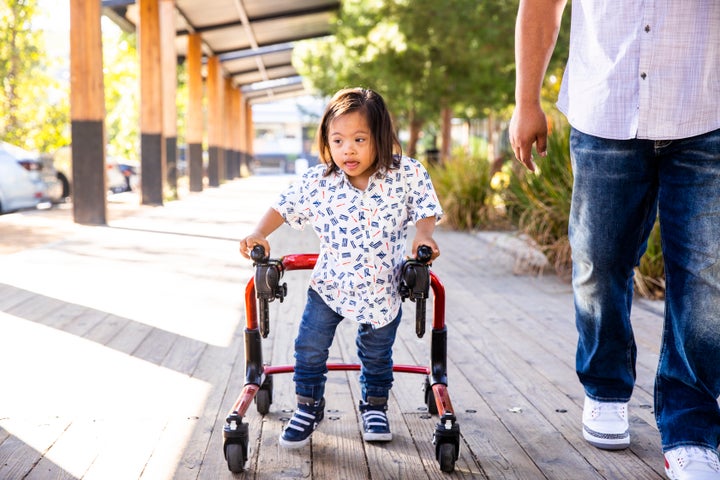
Bring your candy to the sidewalk
“I think if we start by thinking about the average home giving out trick-or-treat candy, then it’s important to know that you’re going to get kids of all abilities coming to your door,” Penner said. “So one of the first things to consider is the issue of physical access.”
Though it may seem obvious, the issue of physical access to homes is often overlooked when it comes to Halloween preparation. Stairs, curbs and steep driveways are a challenge for kids who have mobility issues. They can’t always make it up to the door, and even if they can, there are sometimes other tripping hazards and physical barriers, like decorations on the driveway.
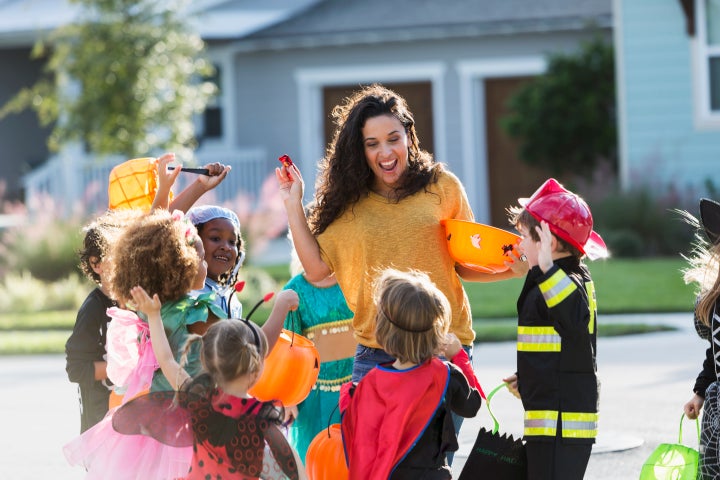
“My daughter is in a wheelchair, and if there’s a curb or a difficult driveway or steps, that’s automatically telling her that she isn’t welcome,” Haefele said.
The fix for this, Penner says, is easy. “If you have the option to do so, it’s good to consider bringing your candy down to the sidewalk level,” she said. “You can also just to keep an eye out so you can meet someone at the sidewalk level, if you need to.”
Haefele adds that filling the driveway with light — whether it’s lanterns, candles, or whatever other well-lit spooky decorations — is also a way to make it more accessible to people who might have vision problems. “When you do things like that, when there’s light and there’s no curb and there are no steps, you’ve created a welcoming physical space,” she said.
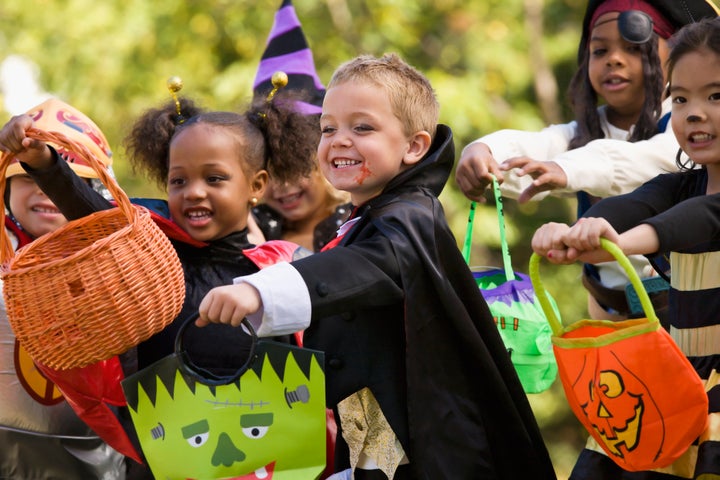
Be patient
Many disabilities are not immediately discernible. Some neurological disorders manifest via motor skills, Penner said.
“Just be aware that some kids may have difficulty with doing things like reaching for candy, or speaking quickly, or even speaking at all,” she explained. It might take them a little more time to move or to say thank you and a little understanding can go a long way.
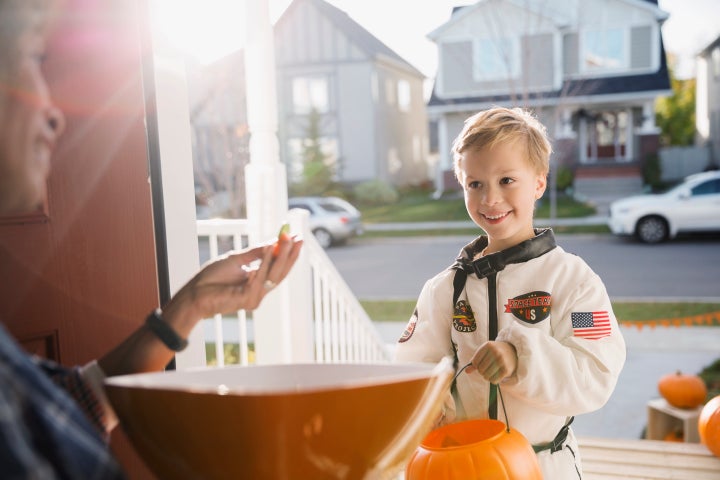
In some cases, too, kids might even need your help with putting their treat into their container.
“It’s important just to be patient, and not to be too quick to speak for them,” Penner said. “Give them the opportunity, but also be aware if they’re having difficulties.”
Some kids also have speech and/or hearing issues, so it’s good to ensure that your face is always well-lit, so they can see your face and mouth as you speak.
Clear a safe, non-spooky path
Kids with Autism Spectrum Disorder (ASD) sometimes have particular sensory sensitivities, which means they may react strongly to highly stimulating environments that are commonplace on nights like Halloween.
Flashing lights and loud noises, for example, can be stressful for kids with ASD, and might make them more anxious or hesitant to approach a home.

“If you’re the type of family who wants to do the whole haunted house decoration experience, it’s good to think about having a safe or quiet pathway, too, for kids to access candy without having to go through that really intense sensory experience,” Penner said.
This isn’t to say that no one should do elaborate Halloween decorations. Some kids find that fun, and Penner said she isn’t shaming anyone into feeling like they can’t put work into their holiday decor.
“Just try to give people varying options for how to interact with it, or the opportunity not to,” she said.
Consider non-candy options, and marking your home to show it’s accessible
Since some kids might have food allergies, or might not consume food orally, Penner says it’s worth considering incorporating non-food options in your treat basket, like stickers, coupons and small toys.
In fact, there are even special markers you can add to your Halloween decorations to indicate that you have treats for everyone.
“There are colour codes out there for people who are giving out allergy-free treats, or non-food treats,” Penner said. Putting a teal pumpkin on your doorstep, for example, means you have things like glow sticks or small toys available to kids who might have food allergies or other conditions.
“But we can probably do a lot better in terms of letting people know that a home is providing an inclusive Halloween.”
Haefele says one thing she likes are the free signs from Home Depot, which indicate that a home is accessible for kids of all abilities. The signs are available at specific locations only.
Think about a practice run
“If you’re a family member of a child with a neurodevelopmental disorder or disability, I think there are some additional ways to think about preparing,” Penner said. “If this is a new experience for your child, you may want to do some practice runs first — and I think these should be pretty motivating, if there’s a candy reward at the end.”
A good way to do this is to have your kid practice trick-or-treating at their own home, so they can get familiar with how the routine works — going up to the door, knocking, asking for candy, and saying thank you.
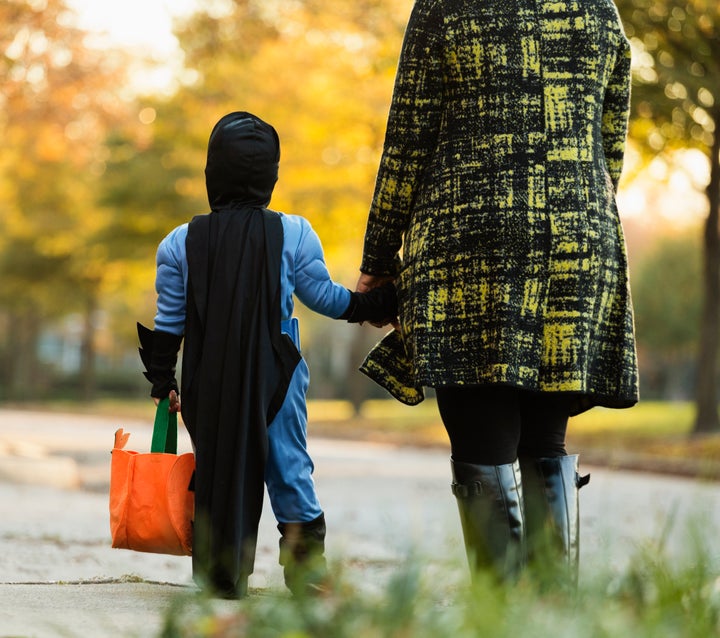
You could also go to a family member’s house and do the same thing. “That practice and repetition in a safe environment makes kids more comfortable,” Penner said.
Since some kids may have difficulties recognizing familiar people in costume, it may also be beneficial to let them see you dress and undress from your costume, she added.
“If you can let your child watch you get ready for the night, it can help them understand that you’re still Mom or Dad, but you’re just wearing a costume,” Penner said. “And similarly, when it comes to actual trick or treating, you may want to start out with some familiar people, or familiar houses. That takes some of the pressure off going up to a stranger’s house and asking for candy.”
Other ways to help
Awareness spreads with visibility, and when it comes to Halloween, it’s always good to lead by example.
One subtle way of raising consciousness is by simply being clear with your own efforts, going the full nine yards so that neighbours can see there are distinct ways to make Halloween accessible, Penner said.
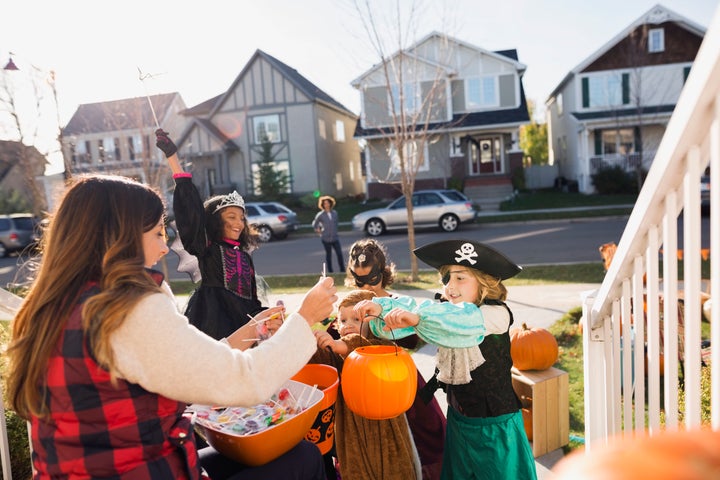
“It’s a way of generating awareness and positively peer pressuring your neighbours into thinking about how they’ll do Halloween the next time.”
Haefele says lending social support can also ease some of the anxiety that can accompany the holiday season.
“I think the biggest thing is understanding that this kind of celebration is not easy for some families in our communities,” Haefele said. “If you see a family struggling during this time of year, you should ask if there’s anything you can do to make the holiday more accessible. Sometimes it’s just the social piece that can change the whole situation and make it more accessible for families like mine.”